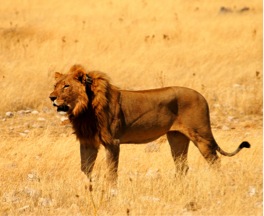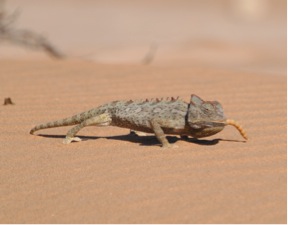The airplane was over the Atlantic Ocean when I first thought of the question that would dwell in my mind until I finally reached Namibia. If Namibia is mostly desert, how does life survive? With average rainfall being less than two inches a year, how is it possible for animals and humans to sustain themselves? I was oblivious to the fact that the answers I would unearth during my time here in this sandy, desert land would completely change my outlook on life altogether.
I remember the first time I experienced the fog. It was an early, chilly morning at Neudamm campus when I stepped outside and saw a dense blanket of fog covering the landscape. Where did it come from? I was smack in the middle of Namibia, one of the driest countries on earth, yet it still managed to produce fog? It just didn’t add up. Finally, after much contemplation, I asked one of the Namibian professors about it. According to Professor Mpofu, the fog is produced from the cold ocean current along the coast and is the main source of water for many plants and animals. One insect in particular uses the fog in a very unique way. The Toktokkie beetle is endemic to Namibia, and is found mainly in sandy desert areas. At night the Toktokkie beetle scurries up the massive sand dunes and points its lower abdomen into the air with its head pointing towards the ground. The beetle does this to capture fog droplets so the water will roll down its back until a single drop trickle into its mouth. I never would have imagined a beetle to be quite so resourceful.
There are thousands of desert insects that survive on fog moisture. In return, there are many animals that survive on insects. Chameleons, bats, geckos, birds, and snakes are a few examples of animals that dwell in the harsh Namibian landscape, living on insects. Even so, bigger animals such as jackals, hawks, and foxes survive by eating the insect-eaters. This delicate ecosystem is what supports the animals and human inhabitants of Namibia.
As I learned how life is supported here, I realized that just as the animals depend on the fog, we humans depend on one another for survival. In times of loss, we turn to our family and friends for comfort. In times of happiness, we gather together in celebration. In times of need, we depend on those who we trust to help lead us in the right direction. We need each other. We will always need each other. I would have never thought desert life would teach me such a valuable lesson.



